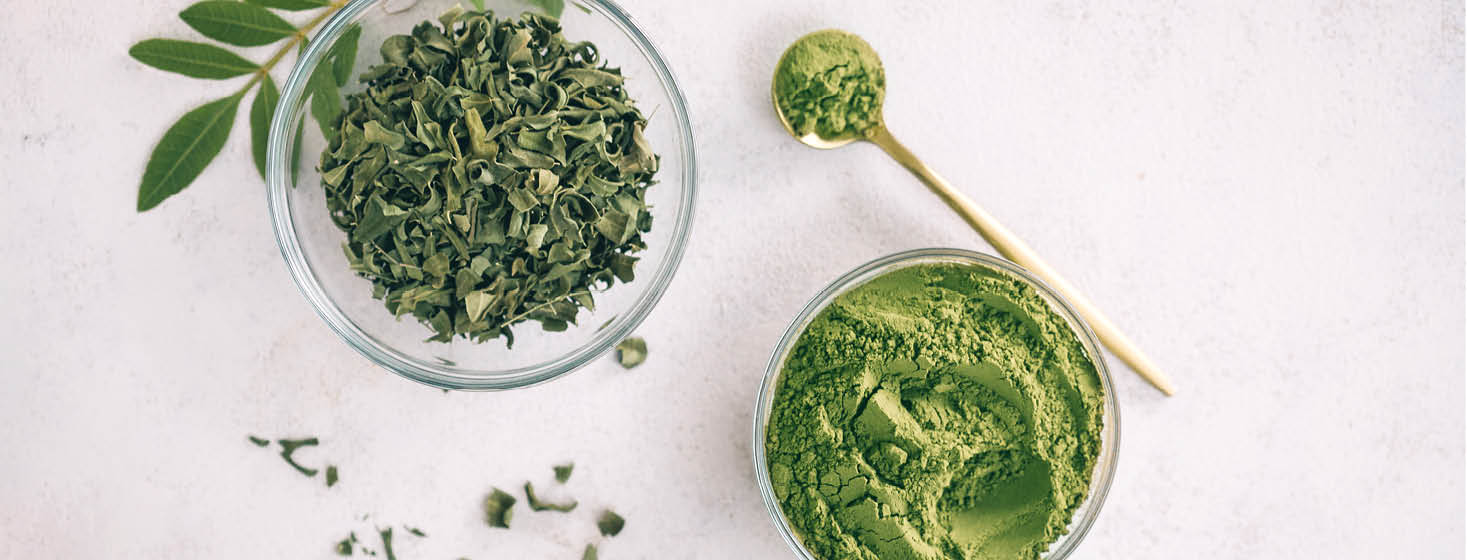
The Moringa tree (Moringa Oleifera) also goes by the more commonly used “drumstick tree” or “horseradish tree” or “Ben Oil tree” names. It is one of the most powerful health enhancing plants on the planet and luckily it is highly sustainable and grows easily in many tropical parts of the world. The Moringa Oleifera is a fast growing (they can grow over 6 metres per year), leafy plant that produces flowers and pods that have been used by health professionals and authorities all over the world – particularly to address malnutrition. Moringa is capable of growing in dry, poor quality soils where many other plants cannot survive. It grows year round, and when it decomposes the leaves fertilise the soil to allow other plants to prosper. In 2008 The National Institute of Health in the USA called Moringa “The plant of the year” saying “like no other single species this plant has the potential to help reverse major environmental problems and provide a sustainable solution for many unmet human needs”.
Many studies have been undertaken around the world to focus on the numerous healing and nutritional qualities of this plant. Almost every part of the plant can be used in some way productively. Moringa is best known for its ability to provide nutrition and as a natural energy booster. It is a great source of Vitamin E and potassium which can support healthy blood pressure. Being high in protein means it can assist in muscle growth, development, energy, immunity and detoxification.
It offers the highest protein ratio of any plant so far found out there, and the quality of the protein is comparable to soy – without the issues that some people have with soy! Moringa contains all eight of the essential amino acids usually only found in meat products, and 18 of the 20 amino acids required by humans. So the real nutritional benefit here is the extra protein and minerals which can be especially beneficial for vegetarians, vegans, those recovering from long term illness and those who are fussy over food or have a poor appetite.
The uses of Moringa are well documented in both the Ayurvedic and Unani systems of traditional Indian medicine for well over 4,000 years (Moringa grows prolifically there). The leaves in particular get a lot of attention, for their use in supporting blood pressure, fluid balance, and possibly may even support healthy cholesterol levels.
You can use the Moringa powder in your meals; it has a flavour similar to a mild salad radish. You can toss it into a salad dressings, blend it into smoothies or soups for extra nutrition, or use it in dishes and savoury baking as you would spinach. Moringa powder has a distinctive “green” flavour, so you may want to start out slowly when adding it to your meals, especially with fussy eaters and young children while they adapt to the taste.
It is possible that chemicals within the leaves, bark and flowers can cause the uterus to contract which can cause some concern during pregnancy – so for this reason we recommend not taking Moringa if you are pregnant.
When buying Moringa, look for a package that blocks out light (no transparent bags) as light destroys the vitamin C content very quickly. Once you have opened your pottle- close it up as soon as you can and keep in a cool dark environment (pantry cupboard under 30 degrees is fine). It absorbs moisture, so keep it tightly shut or it will go lumpy and mouldy. The best Moringa comes from countries where tropical fruits grow well.
There are different types of Moringa plants – the one you are looking for is Moringa Oleifera as it is much more nutrient dense. Choose certified organic (check it is certified in NZ by either BioGro or AsureQuality and not just claiming it is Organic in the title) and look for sources outside of China or India as the trees will take up chemicals and contaminants from the soils around them – especially heavy metals. Good quality Moringa should be a deep rich green, – not a yellowy, minty green or light brown colour. If it is this colour it got harvested too quickly and therefore doesn’t pack the nutritious punch it could do. When you open the pottle it should hit you with a nutty green smell, quite intense – but it shouldn’t make you feel ill or overpower you.
Right now you are “qualified” you are ready to enjoy your Moringa

